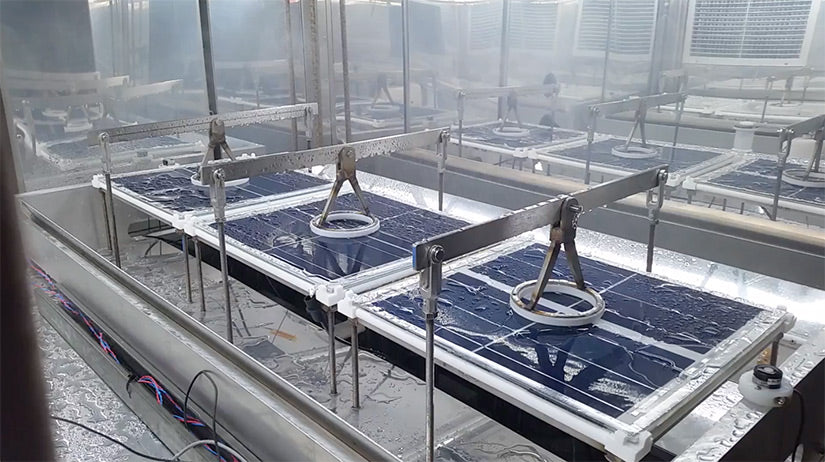https://www.pv-magazine-australia.com/2022/03/16/mit-scientists-develop-waterless-pv-cleaning-system/
MIT scientists develop waterless PV cleaning system

Massachusetts Institute of Technology (MIT)
From pv magazine Global
Scientists from the Massachusetts Institute of Technology have developed a lab-scale solar module cleaning system prototype that uses electrostatic repulsion to cause dust particles to detach and virtually leap off the surface of panels.
They described the system in “Electrostatic dust removal using adsorbed moisture–assisted charge induction for sustainable operation of solar panels,” which was recently published in Science Advances. They said it is a device that is able to “actively charge” dust particles and impart strong Coulombic force for dust repulsion.
“Our approach overcomes the prior limitations that occur due to reliance on relatively weak, short-range dielectrophoretic/triboelectric force and eliminates the issue of electrical shorting,” the scientists explained.
The waterless system can be operated automatically via an electric motor and is activated by an electrode placed on top of the module surface. The electric charge it releases repels dust particles from the panels. The bottom electrode consists of a glass plate coated with a 5 nm transparent and conductive layer of aluminium-doped zinc oxide (AZO), using atomic layer deposition (ALD). It is mobile to avoid shading and moves along the panel during cleaning with a linear guide stepper motor mechanism.
The system can be operated at a voltage of around 12V. The researchers said that it can recover 95% of the lost power after cleaning for particle sizes greater than around 30 μm.
“We use Arizona test dust (intermediate and miscellaneous test dust fractions from Powder Technology Inc.), also known as crystalline silica dust, whose chemical composition emulates that of typical desert mineral dust particles in our experiments,” the researchers said.
One of the researchers, Sreedath Panati, said that the group performed experiments at a range of humidity levels, from 5% to 95%. “As long as the ambient humidity is greater than 30%, you can remove almost all of the particles from the surface, but as humidity decreases, it becomes harder,” said Panati.
The simulations showed that the electricity consumption of the device is negligible.
“There is no current flow between the top and bottom electrodes and therefore no electrical power consumption. The only mode of power consumption is that associated with the translation of the moving electrode,” they said, noting that more cost reductions could be achieved by further reducing the thickness of the electrode coating.
This content is protected by copyright and may not be reused. If you want to cooperate with us and would like to reuse some of our content, please contact: editors@pv-magazine.com.
<




